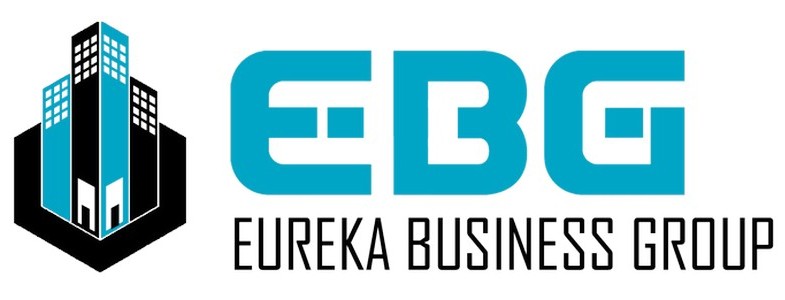- Home
- Industrial
- Industrial Investors Resources
- How E-Commerce is Shaping the Industrial Flex Market!
How E-Commerce is Shaping the Industrial Flex Market!
The rise of e-commerce has revolutionized not just how people shop but also how businesses operate. With the increasing demand for faster shipping and a broader selection of products, the logistics and real estate sectors have had to adapt rapidly. One segment of the real estate market that has seen a significant shift is the industrial flex market. Industrial flex spaces, which combine warehouse, office, and sometimes even retail space into one adaptable unit, are now essential to the e-commerce ecosystem. But how exactly is e-commerce shaping the industrial flex market?
In this blog post, we’ll dive into the impact of e-commerce on the industrial flex space, what’s driving this change, and how businesses and real estate investors can take advantage of the current trends.
The Growth of E-Commerce and Its Impact on Industrial Real Estate
E-commerce has been on an upward trajectory for over a decade, but the COVID-19 pandemic accelerated the trend exponentially. According to Statista, global e-commerce sales grew by more than 25% in 2020, with the U.S. e-commerce market contributing significantly to this growth. With more consumers relying on online shopping for everything from groceries to electronics, retailers had to optimize their supply chains, leading to a surge in demand for industrial spaces.
Traditional warehouses were once the backbone of retail operations, serving as storage facilities for physical stores. However, with the growth of e-commerce, the need for distribution centers located closer to urban centers has increased, giving rise to the demand for industrial flex spaces. These spaces are more adaptable and versatile, making them perfect for businesses needing both office space and distribution capabilities.
Why Industrial Flex Spaces Are a Perfect Fit for E-Commerce
Flex spaces provide the flexibility that e-commerce businesses need to remain agile and responsive in a fast-paced market. Here are some key reasons why these spaces are ideal for e-commerce:
Proximity to Urban Areas One of the main challenges for e-commerce businesses is meeting the ever-growing consumer expectation of faster shipping. Same-day or next-day delivery has become the norm in many markets, making it essential for businesses to position their operations close to major population centers. Flex spaces are often located on the outskirts of cities, providing easy access to highways and transportation hubs, which speeds up delivery times.
Scalability and Customization E-commerce businesses can experience fluctuating demand, especially during peak seasons like the holidays. Flex spaces allow businesses to scale up or down more easily. The versatility of industrial flex buildings means companies can expand their warehouse space during high-demand periods while maintaining office and retail operations in the same location. This adaptability is key for businesses that need to optimize their supply chain without committing to long-term changes.
Cost-Effective Traditional warehouses in prime urban areas can be prohibitively expensive. Industrial flex spaces, on the other hand, are typically more affordable because they are designed to be multipurpose and located in less central, though still accessible, areas. This makes them an attractive option for e-commerce startups and small to medium-sized businesses looking to manage their costs.
Hybrid Use E-commerce companies require a mix of operational spaces, including office, warehouse, and sometimes showroom or retail space. Flex spaces combine these needs under one roof, streamlining operations and reducing the need to lease multiple locations. This is particularly advantageous for businesses that need a seamless flow between their office teams (e.g., customer service, administration) and warehouse operations (e.g., order fulfillment, inventory management).
Innovation and Technology Integration With the rise of automation, AI, and robotics in logistics, many e-commerce businesses are investing heavily in technology to optimize their fulfillment processes. Industrial flex spaces are often newer builds or have been updated to accommodate modern technological needs. This makes it easier for businesses to integrate advanced systems, such as automated picking and packing machines, inventory tracking software, and even AI-driven logistics systems.
E-Commerce Trends Driving the Industrial Flex Market
Several e-commerce trends are currently influencing the industrial flex space market. Let’s explore a few:
1. The Rise of Micro-Fulfillment Centers
As same-day delivery becomes more common, businesses are increasingly turning to micro-fulfillment centers to meet customer expectations. These smaller distribution hubs are designed to process orders faster and are often located within or near urban centers. Flex spaces are perfectly suited for this purpose, as they can be easily modified to serve as both a warehouse and a customer pick-up location.
Micro-fulfillment centers allow e-commerce businesses to reduce the time it takes to get products to customers. They also enable more efficient last-mile delivery operations, which is crucial for businesses trying to cut costs while improving delivery speed.
2. Direct-to-Consumer (D2C) Boom
The direct-to-consumer model has exploded in recent years, driven by brands that prefer to sell directly to customers rather than going through traditional retail channels. This model requires a robust logistics network to fulfill online orders, making industrial flex spaces increasingly valuable for D2C brands.
D2C companies need the flexibility to manage everything from manufacturing (or at least assembly) to order fulfillment in one location. Flex spaces provide the opportunity to integrate office, warehouse, and retail space in one location, which is ideal for these operations.
3. Omnichannel Retailing
Omnichannel retailing, where businesses provide a seamless shopping experience across online, in-store, and mobile channels, is becoming the norm for many retailers. To support this model, companies need flexible industrial space that can function as both a distribution center and a showroom or retail location.
For example, some e-commerce companies allow customers to order products online and pick them up in-store (BOPIS). Flex spaces provide the perfect venue for businesses to merge these operations, offering both storage and customer-facing areas in one property.
4. Increased Demand for Sustainable Operations
Sustainability has become a significant focus for both businesses and consumers. E-commerce companies are increasingly under pressure to reduce their carbon footprints, which includes optimizing supply chains and using energy-efficient buildings.
Many industrial flex spaces are newer constructions or have been renovated to meet modern energy efficiency standards. These buildings often come equipped with features like solar panels, LED lighting, and energy-efficient HVAC systems, making them an attractive option for companies committed to sustainability.
The Future of Industrial Flex Spaces in the E-Commerce World
The future of the industrial flex market looks bright as e-commerce continues to grow and evolve. Here’s what we can expect to see in the coming years:
Increased Demand for Urban Flex Spaces: As more e-commerce companies prioritize proximity to urban centers, we’ll see an uptick in demand for industrial flex spaces located on city outskirts or within dense metropolitan areas.
Technological Integration: Flex spaces will become even more tech-friendly, incorporating infrastructure for robotics, automated systems, and AI-driven logistics. This will allow businesses to further streamline their operations and improve efficiency.
Sustainability as a Standard: With growing emphasis on eco-friendly operations, flex spaces will continue to evolve to meet the latest sustainability standards, further attracting companies looking to reduce their environmental impact.
Smaller, Smarter Spaces: As micro-fulfillment centers become the norm, we may see more demand for smaller, smarter industrial spaces that maximize efficiency while minimizing footprint.
Conclusion
E-commerce has had a profound impact on the industrial flex market, driving demand for adaptable, scalable, and tech-friendly spaces. As consumer expectations for faster delivery and seamless shopping experiences continue to rise, businesses will increasingly rely on flex spaces to meet their needs. For real estate investors and developers, the industrial flex market presents a significant opportunity, particularly as e-commerce continues to grow and evolve.
The future of retail is undoubtedly intertwined with e-commerce and the industrial flex market, and those who adapt to these changes will be well-positioned for success.



